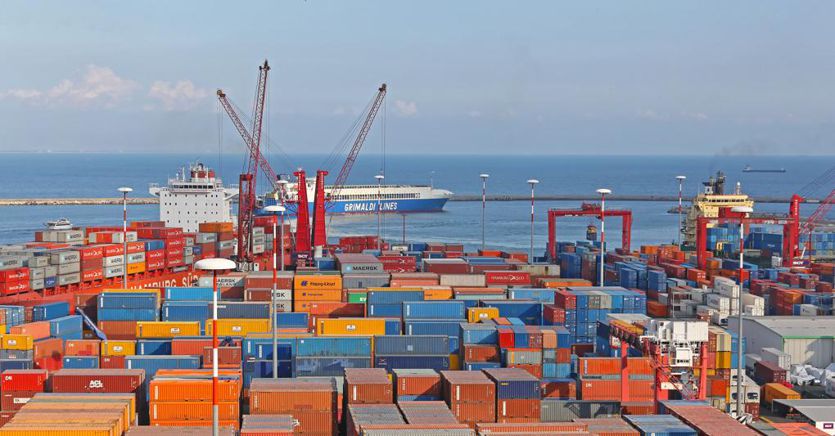Divergent performance in April for foreign trade outside the EU: in fact, according to Istat data, trade with countries outside the EU27 sees – compared to March – a decrease in exports (-2.1%) and a marked increase in imports (+13.9%). On an annual basis in April 2023, exports fell by 5.1% (from +6.8% in March). With the exception of capital goods (+10.7%), the reduction concerns all groupings and is more extensive for energy (-38.5%). An even stronger drop for imports which recorded a tendential decline of 19.5%, determined by the contraction of energy purchases (-37.3%), intermediate goods (-12.9%) and non-durable consumer goods ( -8.9%).
The decrease on a monthly basis in exports – continues Istat – is explained by the reduction in sales of durable (-7.8%) and non-durable (-7.6%) consumer goods and intermediate goods (-7. 2%); while exports of capital goods (+7.5%) and energy (+4.7%) increased.
On the import side, there are cyclical increases for all groupings. In the February-April 2023 quarter, compared to the previous quarter, exports decreased by 2.6%, due in particular to lower sales of intermediate goods (-6.2%) and capital goods (-3.8%). In the same period, imports show a cyclical reduction (-13.4%), generalized and more marked for energy (-25.6%). As for trade destinations, exports to the United Kingdom (-15.1%), OPEC countries (-8.1%), ASEAN countries (-6.3%) and China (-2.4%) are decrease in trend terms; on the other hand, sales to Turkey (+8.5%), Japan (+6.7%) and the United States (+6.6%) increased.
Purchases from almost all the main non-EU27 partner countries are decreasing on an annual basis: as a result of the sanctions, imports from Russia recorded the largest trend contraction (-85.2%). Commenting on the data, Istat highlights how exports to non-EU27 countries in April, for the second consecutive month, show a decrease on a basis while imports interrupt the negative economic dynamics underway since last September. Furthermore, after more than two years of growth, for the first time exports show a decline on an annual basis, with widespread declines in all groupings, with the exception of capital goods. Imports confirmed their decline in tendential terms for the fourth consecutive month; the decline remains geographically widespread and is almost entirely explained by the contraction in purchases of energy and intermediate goods.
